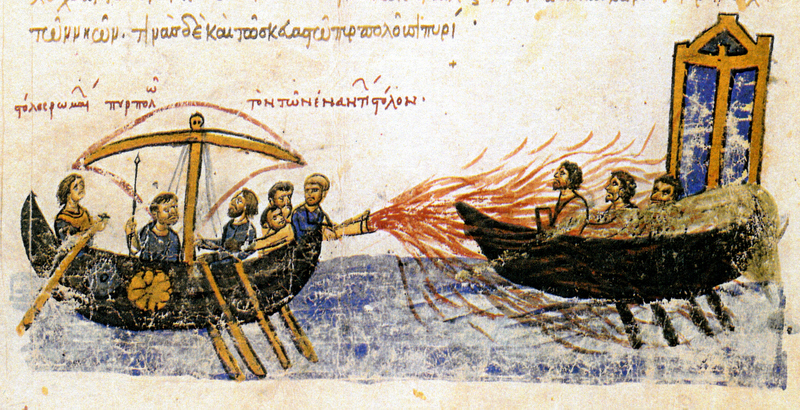
As the gun control debate heats up, Digital Dying decided to take a look at a handful of more ancient weapons and just how they disposed of their victims…
Fire Lance – The fire lance was a bamboo tube with a spear tied to its underside. Inside the tube was a firework like charge and a tiny projectile, often a poisonous dart. When fired, the weapon ejected the dart in a burst of flame. The fire lance was used primarily in hand to hand combat as the range was only a few feet. The device appeared as early as the 10th century and became particularly popular during the middle of the Song Dynasty, in the 12th century. During this time China was invaded continuously by tribes from the North. Fire lances could only fire one shot but being made of bamboo allowed them to be disposable. They were held in racks on city walls and made the perfect weapon against enemies trying to scale the walls. By the 13th century, fire lances hurled their projectiles with sufficient force to actually kill people.
Other Great Reads: Weird and horrible ways of execution
Hand Culverin – The culverin was like a miniature personal canon. The weapon consisted of a tube that was loaded with gunpowder and lead bullets. The end was closed except for a small hole designed to fire the gunpowder. The shooter kept the tube in place with a piece of wood, held under the arm and used as a stabilizer. The device was fired by inserting a lit cord into the hole, kind of like the way in which the red-bearded cartoon character Yosemite Sam fired his canon. Only culverins were much smaller, and looked something like a flute or spy glass. One type of culverin, known as the bastard culverin, was just four inches long and weighed only 7 pounds.
Hand culverins were eventually replaced by heavier portable culverins that weighed about 80 pounds and could pack a much larger punch. They were used extensively on ships, as a sort of primitive canon. The French used portable culverins in the 15th century, during the 16th century they were used by the British Navy.
Hunga Munga – This iron fighting tool is named for the African tribes that live south of Lake Chad, in central Africa. The weapon looks something like the Russian sickle and has two heads, one with a curved blade and the other with a two-pointed spike. Near the handle is a stubby but sharp third spike. It can be used in hand to hand combat or thrown with a rotating motion, like an Australian boomerang. One can imagine the utter horror of being hit anywhere on the human body by a rapidly rotating hunga munga.
While most popular in the Lake Chad area the weapon is also used in Gaboon, in West Africa and across the Upper Nile region. In other parts of Central Africa the weapon is shaped like a bird’s head. But the most popular hunga munga of all is the weapon used by Buffy to battle demons on the long-running TV show, Buffy the Vampire Slayer. Buffy wasn’t the only one on the show who wielded the weapon. A group of demons known as the Family Home Enslavers who lured teenagers into their lair by promising them a safe place or warm meal was also fond of the hunga munga.
Other Great Reads: Why men and zombies die so much on TV
Greek Fire – Greek warships would carry giant cauldrons filled with a mysterious incendiary liquid. Once in range of an enemy ship the Greeks would heat and pressurize the liquid then use a siphon to “squirt” it out across the sea in the direction of the enemy to devastating effect. The components of this fearsome ancient weapon were a closely guarded secret. Even the soldiers who helped prepare the fire did not know the ingredients. In 814 the Bulgarians captured two Greek warships, containing some 36 siphons. A few still contained the mysterious liquid used to make Greek fire, but without knowing the proper components the Bulgarians were unable to make use of it.
Modern scientists have been unable to figure out the exact makeup of the fire. Three possible combinations include petroleum, potassium nitrate and sulfur, naphtha, quicklime and sulfur or phosphorus and saltpeter. But the following is known from old records: Greek fire burned on water and according to some accounts was even ignited by water; it could be extinguished only by a few substances, including sand, strong vinegar and old urine and it was accompanied by thunder and much smoke.
“Every time they hurl the fire at us, we go down on our elbows and knees, and beseech Our Lord to save us from this danger,” wrote one witness who saw the weapon in action and lived to tell the tale.










David Friedman
You refer to the “Greeks,” which suggests ancient Greece, but you are actually talking about the Byzantine Empire.